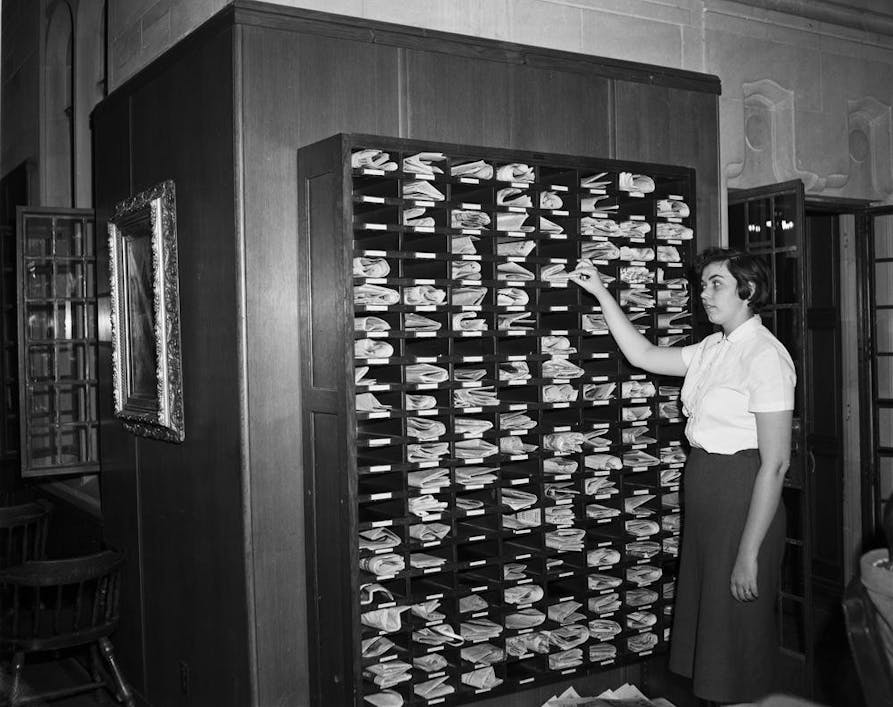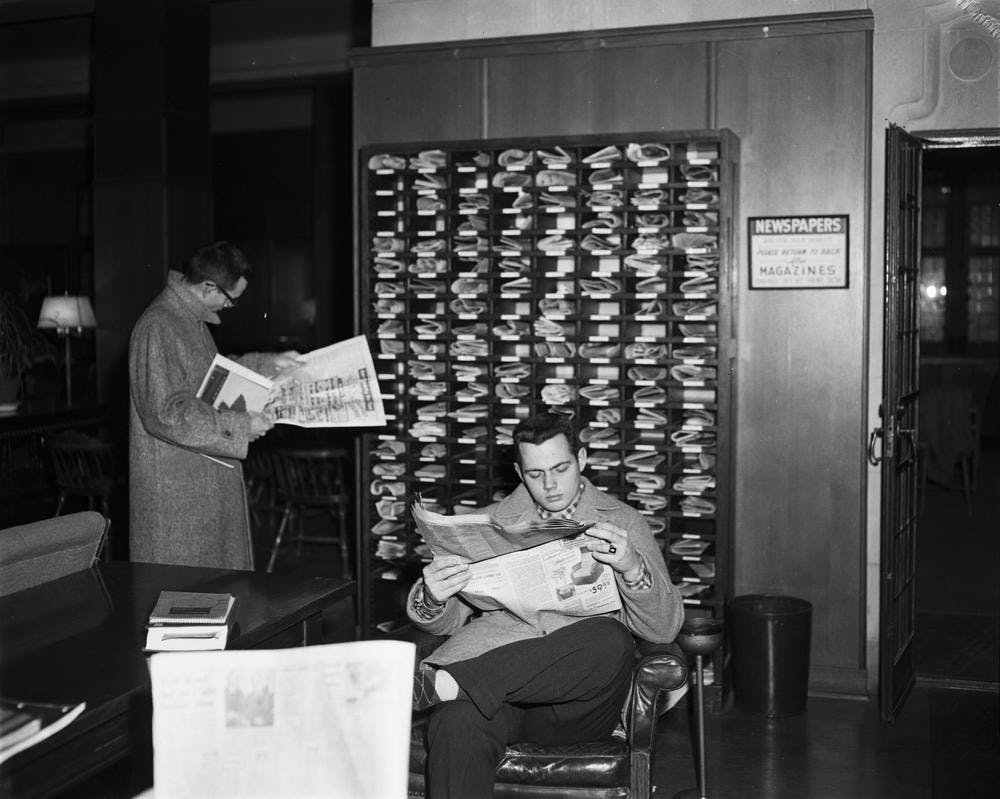A lone mailbox stands in the Indiana Memorial Union South Lounge. It had placards with the names of cities with newspapers in Indiana, with some nameplates there and others lost. As recent as 30 years ago, students grabbed newspapers from that mailbox to keep up with news in their hometowns.
The mailbox originally served the function of providing news to students who moved away from their hometowns before the internet. The service was voluntary, with newspapers donating publications to the IMU.
Winston Shindell, former executive director of the IMU, said the newspapers were sorted into specific counties, so students could find the publications and catch up on the local news.

“That was something that was done for their students here,” Shindell said.
Shindell said many alumni told him how much they loved the mailbox novelty and how the Union provided them a space to catch up with their hometown news. In the beginning, the service was extremely popular and students were always in the room.
Lounge matrons kept the newspapers stocked and in the right places, Shindell said. They would keep the lounge clean and close the drapes that used to rest across the windows in the lounge at night.
Alumus Steve Moberly said the lounge had many features that attracted students, the mailbox being one of them. He said he can remember students coming to play the piano and sitting down to read the paper from Shelbyville, Indiana. He said later his parents gave him a subscription to the paper, so he no longer needed to go to the mailbox.
“It was reassuring,” Moberly said. “I was still interested in what was going on at Shelbyville High School.”
Moberly said he felt the newspapers helped reduce some of the homesickness students felt, as they were still connected to their news and were able to indirectly keep in touch with people.
“They could go in and pull up a paper and read about their friends they still had and had not yet graduated,” Moberly said.
The newspapers gradually began to stop coming, with more and more publications being unable to afford sending free subscriptions. Shindell said he thinks it was because of the finances because many subscriptions came from small-town newspapers. There may not have been a lot of disposable income.
“I think it’s just a sign of the times,” Shindell said.




